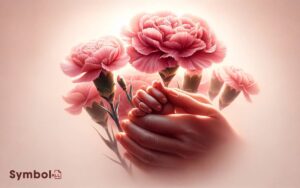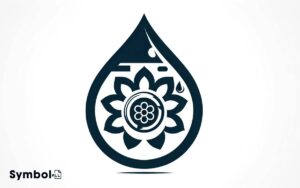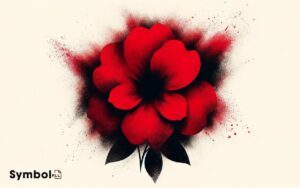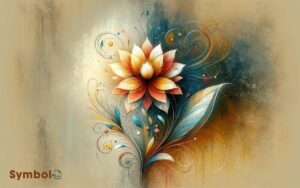What Does the Flower Symbolize in the Little Prince? Love!
In “The Little Prince,” the flower isn’t just a character; it’s a powerful symbol of love, vanity, and the fleeting nature of life. You’re shown that love requires patience, understanding, and a willingness to look beyond your own needs.
The flower’s beauty and fragility serve as a poignant reminder of life’s impermanence and the importance of cherishing genuine connections over superficial appearances. True connection demands sacrifice, highlighting that caring goes far beyond mere possession.
This narrative weaves a profound lesson on responsibility, emphasizing that nurturing relationships demand our time, recognition of vulnerability, and mutual respect. As you explore further, you’ll uncover deeper layers to these poignant themes.
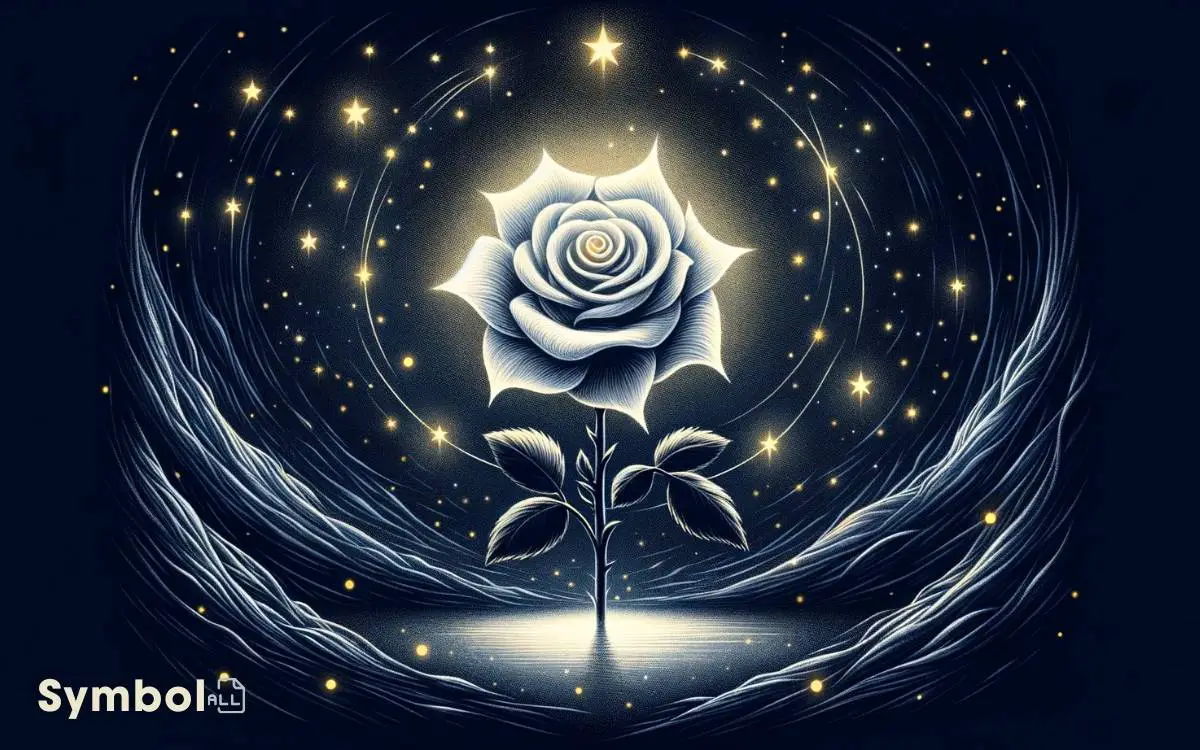
Key Takeaways
The Essence of Love
In the Little Prince, the flower embodies the essence of love, revealing how it’s not merely about possession but involves mutual care and growth. This narrative element serves as a profound metaphor, teaching you that love transcends the superficial.
It demands patience, understanding, and the willingness to look beyond one’s needs to nurture the bond between two beings.
The flower’s dependency on the Little Prince for protection and care mirrors the vulnerabilities present in love, emphasizing the importance of responsibility in any loving relationship.
Additionally, this dynamic illustrates that true love is about giving as much as receiving, fostering a mutual growth that enriches both entities involved.
Through this, you’re invited to reflect on the depth and complexity of love, beyond just the surface-level attractions or affections.
Beauty and Vanity
You’ll find that the flower in ‘The Little Prince’ embodies not just beauty, but also the vanity that often accompanies it. Its allure, while enchanting, masks the deeper essence that true connections seek, highlighting how vanity can create barriers between individuals.
Additionally, the flower’s fleeting beauty serves as a poignant reminder of the impermanence that characterizes all external attributes.
Essence Beyond Appearance
Although the flower in ‘The Little Prince’ captivates with its beauty, it’s the essence beyond its appearance that profoundly impacts the narrative, revealing themes of love and vulnerability.
This essence teaches you several valuable lessons:
- Beauty is fleeting: The flower’s beauty is temporary, but its impact on the Little Prince lasts a lifetime, emphasizing that what truly matters isn’t seen.
- Love requires risk: Loving the flower, despite its flaws, shows that genuine affection involves vulnerability and the courage to see beyond the surface.
- Understanding is key: The Little Prince’s journey to understand his flower’s true needs highlights the importance of looking deeper than outward appearances.
- Connections are profound: The emotional bond with the flower demonstrates that the most meaningful connections stem from recognizing and valuing inner qualities over external attributes.
Vanitys Isolating Effect
Delving into the narrative, the flower’s vanity not only captivates but also isolates, revealing the paradox of beauty and its unintended consequences.
You see, her obsession with her own beauty creates a barrier, separating her from potential connections. This isolation isn’t a physical one but an emotional chasm, growing wider as her vanity intensifies. It’s a cautionary tale underscoring how self-absorption can lead to loneliness.
The flower, in her pursuit to remain admired, fails to realize the importance of genuine relationships.
This aspect of the story serves as a mirror, prompting you to reflect on the value of humility and the richness that comes from embracing others, not for how they embellish your world, but for the depth they add to it.
Impermanence of Beauty
While the flower’s beauty captivates, it also serves as a poignant reminder of beauty’s fleeting nature, highlighting the significance that often accompanies it.
This aspect of the flower symbolizes a pivotal lesson in appreciating beauty without becoming consumed by it.
Consider these insights:
- Beauty is transient, a momentary delight that fades, teaching you the importance of cherishing the present.
- Vanity, often spurred by beauty, can lead to isolation, as seen with the flower’s self-absorption.
- True value lies not in external appearances but in what’s beneath, encouraging a deeper look beyond the surface.
- The pursuit of lasting beauty is futile, emphasizing the need to seek out qualities that endure beyond the physical.
This message invites you to reflect on the impermanence of beauty and the folly of vanity, urging a more profound appreciation for what truly matters.
Fragility of Life
The flower in ‘The Little Prince’ serves as a poignant reminder of life’s fragility, urging you to appreciate its ephemeral beauty and inherent vulnerabilities. This delicate bloom, standing alone on its planet, symbolizes the delicate balance of life itself.
You’re invited to see beyond its external beauty, to understand the care it requires to thrive. Its susceptibility to the elements and need for protection mirror our own human condition. Each petal, while seemingly robust, holds a fragility that connects deeply with the human heart.
This narrative encourages you to reflect on the transient nature of existence, reminding you that life, much like the flower, is a precious, fragile gift that demands your mindfulness and nurturing.
The Nature of Sacrifice
Exploring the narrative of ‘The Little Prince,’ you uncover that sacrifice is intricately woven into the fabric of its universe, revealing deep insights into love’s true demands and the lengths one will go to protect what they cherish most.
Through this lens, consider:
- The Little Prince’s journey a validation to the extremes of sacrifice for the love of his rose.
- The fox’s teachings highlighting that true connection requires sacrifice, shaping a deeper understanding of love.
- The pilot’s choices illustrating sacrifices made for friendship, underscoring the story’s ethos of prioritizing relationships.
- The rose’s own sacrifices subtly implied through her growth and vulnerabilities, showing that love’s essence is reciprocal sacrifice.
Each element underscores that sacrifice isn’t merely an act but the very foundation of meaningful relationships.
Uniqueness Amidst the Ordinary
You’ll find the Little Prince’s flower isn’t just any ordinary bloom; it embodies an unparalleled personal significance that elevates it above mere appearances.
This distinction highlights a profound truth about the value of uniqueness in a world that often prizes the ordinary.
Through this lens, the story invites us to reconsider what truly merits our attention and care, urging a deeper appreciation for the singular beauty and importance of those we love.
Unparalleled Personal Significance
Amidst a universe of innumerable planets and countless flowers, it’s the Little Prince’s rose that emerges as uniquely significant, embodying the essence of personal connection and the irreplaceable nature of individual love.
This flower isn’t just another object in the prince’s world; it’s a profound symbol of:
- Exclusivity: Unlike anything else, this rose represents a bond that can’t be duplicated.
- Attachment: You learn that love invests objects or beings with unparalleled importance.
- Sacrifice: The care and attention the Little Prince gives the rose illustrate love’s inherent sacrifices.
- Growth: Both the rose and the prince grow and evolve through their relationship, emphasizing personal development through love.
This narrative invites you to see beyond the mundane, recognizing the unique significance in your personal connections.
Beyond Surface Appearances
The Little Prince’s journey reveals that true uniqueness often lies hidden beneath ordinary exteriors, challenging us to look beyond initial perceptions.
This lesson is vividly embodied in the flower, which, to a casual observer, may seem just like any other. Yet, to the Little Prince, it represents a world of its own, brimming with emotions, vulnerabilities, and beauty.
It’s a poignant reminder that uniqueness doesn’t shout from the rooftops; instead, it whispers for us to lean in closer.
You’re invited to see that what makes something truly special isn’t always visible at first glance. This narrative encourages you to appreciate the singular beauty in all beings and things, understanding that their true essence unfolds only to those who dare to look deeper.
The Demand for Attention
In Antoine de Saint-Exupéry’s ‘The Little Prince,’ the flower’s demand for attention symbolizes the nuanced intricacies of love and care in relationships. This portrayal isn’t just about the whims of a demanding flower; it digs deeper into the essence of human connections.
- Understanding Needs: Like the flower, everyone has unique needs that must be recognized and respected.
- Patience and Effort: Catering to these needs requires patience and effort, mirroring how relationships thrive on consistent nurturing.
- Vulnerability: The flower’s demand signifies vulnerability, showing that opening up about our needs can strengthen bonds.
- Balance: It’s a delicate balance between giving attention and smothering, highlighting the importance of mutual respect and space in any relationship.
This metaphor elegantly captures the complex dance of love, care, and attention that relationships embody.
Reflections on Possession
Exploring the theme of possession, ‘The Little Prince’ invites us to ponder how our attachments define and shape us. Through the prince’s relationship with his flower, we’re shown that possession isn’t merely about owning something.
It’s deeply intertwined with the emotional bonds we form, influencing our behavior and sense of responsibility.
The flower, with its beauty and fragility, symbolizes the objects of our affection that we endeavor to protect and nurture. Yet, it also mirrors the complexity of possession, revealing how it can lead to feelings of isolation and misunderstanding.
Essentially, the narrative suggests that what we claim as ours does more than just belong to us; it becomes a part of our identity, reflecting our vulnerabilities and strengths.
Lessons in Responsibility
Delving into the heart of ‘The Little Prince,’ you’ll find that responsibility isn’t just a duty but a profound lesson interwoven with the care of the flower.
Through this delicate relationship, the narrative eloquently teaches:
- Accountability: The Little Prince’s commitment to his flower illuminates the weight of caring for another’s well-being, beyond mere possession.
- Sacrifice: Prioritizing the flower’s needs underscores the essence of true responsibility—selflessness.
- Consistency: Tending to the flower daily highlights the importance of reliability and routine in nurturing roles.
- Patience: The flower’s demands teach the prince the virtue of patience, which is integral to responsible guardianship.
These lessons, subtly imparted, encourage a deeper reflection on the nature of responsibility in our own lives, urging a reevaluation of how we care for those entrusted to us.
Nurturing Relationships
In ‘The Little Prince’, the act of nurturing the flower symbolizes the significance of tender care in building and maintaining relationships.
You confront the challenges of emotional bonds through the prince’s dedication and the obstacles he overcomes, illustrating that true connection requires resilience.
Growth through commitment is vividly portrayed as both the prince and the flower evolve, underscoring the transformative power of nurturing love.
Significance of Tender Care
The Little Prince’s relationship with his rose vividly illustrates how nurturing care fosters deep connections, revealing the profound impact of tenderness on growth and attachment. This tender care isn’t mere sentimentality; it’s a critical component of meaningful relationships.
- Time Investment: Just as the Little Prince dedicates time to his rose, real connections require time. It’s about prioritizing what we cherish.
- Understanding Needs: The rose’s needs are unique, mirroring how true care involves recognizing and respecting individual needs.
- Patience: Growth and deepening bonds demand patience, much like the patience the Little Prince shows towards his rose’s caprices.
- Mutual Respect: The prince and his rose share a bond of mutual respect, highlighting the importance of respecting each other’s space and autonomy.
In essence, tender care is the foundation upon which enduring relationships are built, inviting us to reflect on how we nurture our own connections.
Challenges of Emotional Bonds
Why do nurturing relationships, despite their beauty, often face significant challenges that test their resilience? This complexity stems from the inherent vulnerability in emotional exposure. When you care deeply, you also risk deeply.
The flower in The Little Prince represents this delicate balance its beauty captivates, yet its thorns are a defense against the very intimacy it craves. You’re confronted with the paradox of closeness bringing both joy and potential hurt.
This dynamic illustrates the tension between maintaining one’s individuality and merging with another. It’s a dance of giving and receiving, where fear and love coexist.
Understanding this, you realize that nurturing relationships demand not just affection, but courage to face the uncertainties that emotional bonds entail.
Growth Through Commitment
Commitment in relationships acts as a catalyst for personal growth, challenging you to evolve in ways previously unimagined. Through nurturing relationships, much like the Little Prince and his flower, you’re not just surviving; you’re thriving.
Here’s how:
- Learning Patience: Commitment teaches you the value of patience, allowing relationships to unfold naturally.
- Fostering Understanding: Deep connections are built on the foundations of mutual understanding and empathy.
- Encouraging Vulnerability: Being committed means being open to sharing your true self, which fosters deeper bonds.
- Promoting Self-Reflection: Commitment often mirrors your actions and desires, encouraging a journey of self-discovery and growth.
This dynamic process of nurturing relationships requires a conscious effort, but it’s through this commitment that you uncover the most profound layers of your being.
The Pain of Separation
In ‘The Little Prince,’ the protagonist’s eventual parting from his beloved flower underscores a profound exploration into the complexities of love and the inevitable sorrow of separation.
This moment isn’t just a narrative pivot but a poignant reflection on the nature of affection and loss.
You’re invited to ponder how love deepens not despite, but perhaps because of, the knowledge that separation is a looming inevitability.
The flower, with its beauty and fragility, symbolizes the delicate nature of relationships. The pain of their parting emphasizes that true connection often involves vulnerability and the risk of heartache.
This moment serves as a poignant reminder that to love is to accept the eventual sting of separation, embedding a bitter-sweet truth within the tale’s whimsical folds.
Growth Through Adversity
Adversity, as experienced by the Little Prince through his separation from the flower, serves as a catalyst for profound personal growth and understanding.
This journey away from the comfort and familiarity of his tiny planet and beloved flower illuminates several key insights:
- Self-Discovery: You learn more about yourself when faced with challenges.
- Value of Relationships: The distance makes the Little Prince realize the depth of his feelings for the flower.
- Resilience: Overcoming obstacles strengthens your spirit and determination.
- Perspective: Hardship provides a new lens through which to view the world and one’s place within it.
These elements underline that growth often sprouts from the soil of adversity, encouraging you to embrace life’s trials as opportunities for enlightenment and self-improvement.
The Illusion of Perfection
Through the Little Prince’s interactions with the flower, we uncover the profound truth that perfection is a misleading and unattainable ideal.
This notion is subtly woven into their exchanges, highlighting how the pursuit of flawlessness often masks deeper vulnerabilities and fears.
The flower, with its beauty and fragility, serves as a metaphor for this deceptive pursuit, suggesting that what we often perceive as perfection is merely a facade.
Your understanding deepens when you realize that the Little Prince’s journey is also a lesson in embracing imperfection.
Through this lens, the flower’s imperfections aren’t shortcomings but unique traits that endear it to the Little Prince. This narrative gently nudges you towards the realization that seeking perfection is a folly, steering us away from genuine connections and self-acceptance.
Rediscovering What Matters
The Little Prince’s journey illuminates how reevaluating our priorities leads us to rediscover what truly matters in life.
Through his adventures, you’re invited to contemplate:
- The essence of genuine connections over superficial relationships.
- The importance of seeing with the heart, as what’s essential is invisible to the eye.
- How innocence and curiosity can lead to profound discoveries about oneself and others.
- The value of commitment and care in nurturing our relationships and responsibilities.
This exploration isn’t just a mere narrative; it serves as a mirror reflecting our own lives.
It nudges you to question the hustle of daily routines and the chase after materialistic achievements, guiding you back to the core human values of love, friendship, and the simple joys that give life its true meaning.
Symbol of Reconciliation
You’ll find that the flower in ‘The Little Prince’ serves as a profound symbol for healing emotional rifts and bridging personal differences. Its presence in the narrative gently underscores the potential for understanding and compassion to mend what’s broken.
This imagery invites you to contemplate how reconciliation can transform relationships, emphasizing the power of empathy and forgiveness.
Healing Emotional Rifts
Why does the flower in ‘The Little Prince’ emerge as a powerful symbol for mending emotional divides, offering a pathway to reconciliation?
The flower represents more than just a delicate entity; it embodies the essence of healing and understanding in the face of emotional turmoil. Its soft petals and gentle fragrance serve as a reminder of the strength found in vulnerability and the beauty that can bloom from pain. The gardenia flower symbolism, in particular, speaks to themes of purity, renewal, and emotional peace, offering solace to those seeking comfort in their struggles. By embracing these deeper meanings, the flower becomes not just a fleeting presence in nature, but a timeless emblem of hope and connection.
Here’s why:
- Vulnerability: The flower’s delicate nature reminds us that vulnerability isn’t weakness but a strength that fosters deeper connections.
- Care: Its need for care symbolizes the effort required to nurture relationships and heal wounds.
- Growth: Like the flower, relationships can bloom again with patience and time, symbolizing hope for recovery.
- Beauty in Imperfection: The flower, with its flaws, teaches us to embrace imperfections in ourselves and others, facilitating forgiveness and reconciliation.
In its silent beauty, the flower guides us towards healing rifts with tenderness and compassion.
Bridging Personal Differences
Building on the flower’s role in healing emotional rifts, it also emerges as a profound symbol for bridging personal differences, offering a path toward reconciliation.
This flower, delicate and unique, stands as a metaphor for the intricate nature of human relationships. Its care requires understanding and patience, mirroring the effort needed to overcome personal disagreements.
You’ll find that its vulnerability encourages empathy, pushing individuals to look beyond their perspectives and embrace differences.
The flower’s survival, dependent on the mutual care and understanding between the Little Prince and the flower, underscores the importance of compromise and mutual respect in mending fences.
Consequently, it teaches you that reconciliation isn’t just about finding common ground but also about nurturing it with love and respect.
The Cycle of Renewal
In ‘The Little Prince,’ the flower symbolizes the perpetual cycle of renewal, reflecting the story’s profound insights on growth, loss, and rebirth. This cycle is essential to understanding not just the narrative’s surface but its deeper meanings.
Consider these aspects:
- Growth: The flower’s blooming represents personal development and the blossoming of love.
- Loss: Its wilting signifies the inevitable hardships and losses we all face.
- Rebirth: The eventual revival of the flower symbolizes hope and the possibility of new beginnings.
- Continuity: This cycle repeats, symbolizing life’s constant flux and our resilience in face of change.
Through this, you’re invited to see life’s challenges not as endpoints but as moments of transformation, encouraging a deeper appreciation for the journey and its cycles of renewal.
Conclusion
In ‘The Little Prince,’ the flower isn’t just a plant; it’s a mirror reflecting the complexities of love and existence.
Consider this: about 90% of wildflowers survive by adapting to their environment, much like the flower’s resilience and the little prince’s journey towards understanding the essence of love.
This narrative cleverly reveals the intricate dance between vulnerability and strength, urging you to look beyond superficial beauty and recognize the profound bonds that truly enrich our lives.


